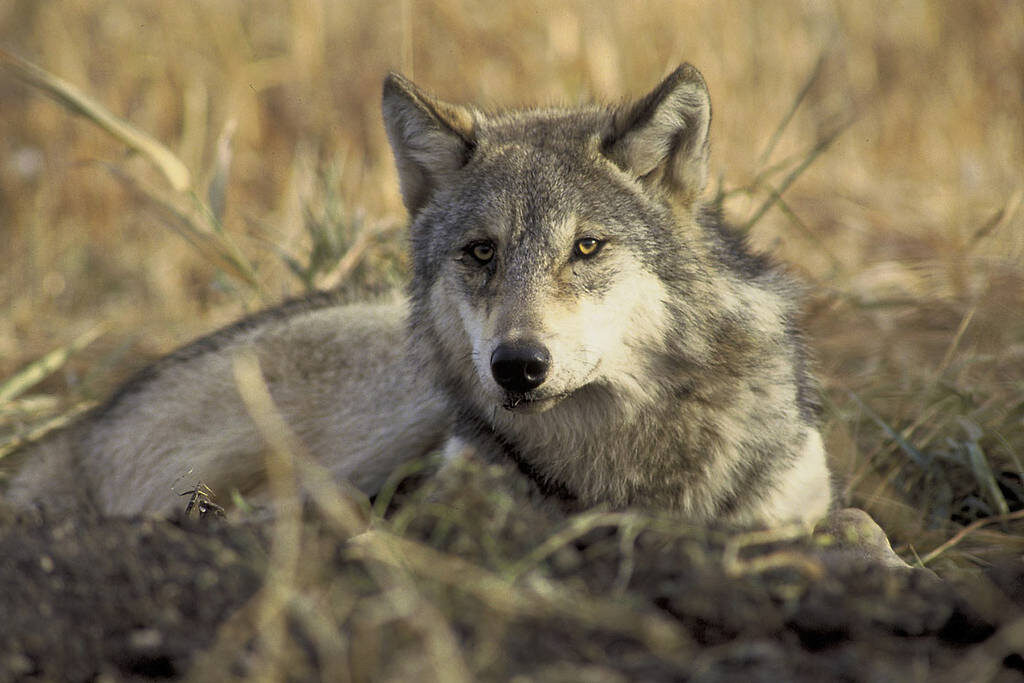
Hold onto your howls.
As of Wednesday afternoon, Colorado’s ballot measure to force the state to reintroduce gray wolves remained too close to call according to election watchers at the Associated Press. Colorado’s Secretary of State’s Office showed an about 9,000 vote gap in favor of the opposition.
Proposition 114 directs state wildlife managers to bring wolves back to Colorado’s western mountains by 2024. Supporters suspected it would sail to victory given polls showing deep support for reintroduction, but voters appear wolf weary.
Rob Edward, who led the ballot campaign for the Rocky Mountain Wolf Action Fund, called the win “a nailbiter,” but noted the biggest outstanding returns remain in wolf-friendly Denver and Boulder.
“We need to let all the votes get counted,” Edward said. “It may be late tonight or early tomorrow.”
The results arrived after Democrats dominated Colorado on Election Night. Jay Fletcher, a rancher who lives near Steamboat Springs, Colo., suspected he’d be a rare outlier as someone who voted for liberal candidates but opposed reintroduction. The final count made it appear just the opposite.
“I’m shocked by how close it is because I thought we’d be overwhelmed by the Front Range people,” he said.
He added other Western Slope ranchers have been even less enthusiastic about the ballot measure, noting they're the ones whose daily lives would be most affected.
If the proposition passes, Colorado would become the first state where voters have directed reintroduction of gray wolves, rather than the federal government. Those previous efforts have brought populations of wolves back to the northern Rockies, New Mexico, Arizona and the Carolinas.
One complicating factor is the Trump Administration's recent decision to remove gray wolves from the endangered species list. On the one hand, it makes Colorado’s task easier since state wildlife managers won’t need permission from the U.S. Fish and Wildlife Service to manage the species. On the other, the state likely won’t be able to receive federal grants to assist the project.
Kerry Donovan, a Democratic state Senator who represents Vail, attempted to pass a legislative compromise to keep the initiative off the ballot earlier this year. If voters ultimately approve the plan, she said the legislature may need to put more pressure on an already strained state resource.
“We currently don’t have a way to budget for that, so that’s a pretty significant policy discussion and hurdle to overcome,” Donovan said.
The close result already represents an accomplishment for hunters and ranchers opposed to the measure. Late last year, a poll from Colorado State University found 84 percent support for reintroduction.
Rethink Wolves, the main group against the measure, dubbed the initiative “ballot box biology” because it let voters, not scientists, make the call for reintroduction. The campaign also focused on a group of wolves apparently already living in northwest Colorado, arguing there was little point in reintroduction if the animals could migrate on their own.
The strategies appear to have worked well enough to give opponents a sliver of hope.
“We do not anticipate this ballot measure being decided before all votes are counted,” said Patrick Pratt, the deputy campaign manager. “While the vote total is not yet final, one thing is clear—Coloradans have serious concerns about the forced introduction of gray wolves.”








